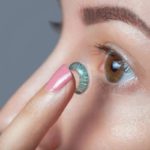
All health care sectors thrive with mobile technology, electronic system and digital diagnostics. Many inventions are being brought in to the health sector every year. While some are still waiting for the approval from the FDA that can take years, there is no stopping new technologies from arising.
Here are a few high-tech gadgets that are changing the health sector:
Using digital diagnostics
To make sure health care is accessible, it will need to be able to provide digital diagnostics for those who cannot get to a doctor’s office. One of the best digital technologies is Neurotrack. This is an Alzheimer’s diagnostic test that is all software-based. The test can find impairments in the brain that is affected by Alzheimer’s, which can be evaluated by eye movement.
Faster scans
An ultra-fast scanner means the heart can be captured in a still image within one beat of the heart. With so many patients that have a high heart rate over 60 means, they cannot have their heart scanned because of how fast their hearts beat. If this happens, they are unable to capture an image. With the new faster scanners, it means we can take a picture within one beat of the heart.
The cloud
Cloud services can provide so many benefits for providers in underdeveloped areas. Research shows us that 944 cloud services are being used within the health care industry.
Health informatics
Most hospitals use electronic record systems. However, it seems most of them don’t fit the federal mandates and are inefficient at keeping records. By updating to more high-tech, electronic systems will see saving to hospitals on average of $37 million. It increases the coordination between providers and lowers the number of malpractice claims.
3-D printing
Medical researchers are harnessing the potential of the 3-d printer to improve patient care. The 3-d printers are being used to produce models of problems found inside patients. Surgeons can handle the models and stimulate the procedure before going into the operating room. This is used for training purposes as well as explaining to patients exactly what is going to be done.
Fingertip surgery
This is one of the most high-tech gadgets where a stretchable electronic sensor will be used to replace operating instruments used during an operation. It allows the surgeons to feel the activity and slice the tissue by using their finger. This allows for a more enhanced sense of touch as well as closer precision. This is a stretchable material much like a surgical glove, made from silicon, ultrathin and combined with a rubber membrane.
The use of digital therapy
Digital therapy is used for people needing care at home who cannot travel to a clinic. There is Wellframe, which combines artificial technology with mobile technology and gives patients care once they have returned home. This platform contains a daily to-do list with the ability to track your exercise and diet. With an advanced algorithm, the content will transfer information from the patient to their healthcare professional.
Concierge medical services
Start-up groups are making it easy for people to pay any out of pocket fees for health services. A good example is GoodRX. It allows you to compare prices for medications at different places to save you money.
Networks and coaching
Mobile technology makes it easy to customise health plans and diets. Some programs are offering mental health coaching that assesses your mood, stress levels and sleep patterns to provide you with a plan suited for your needs.









